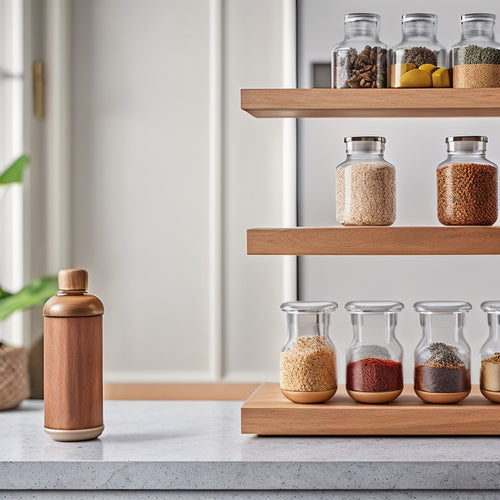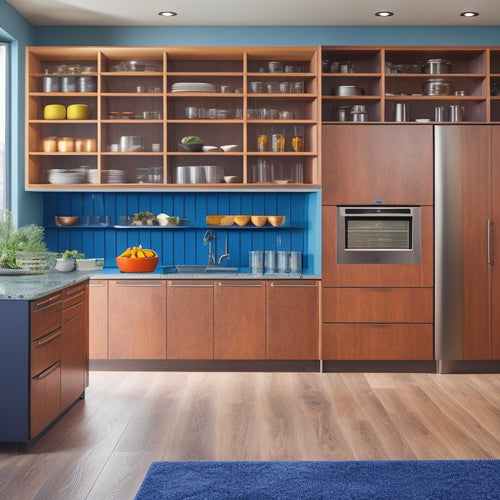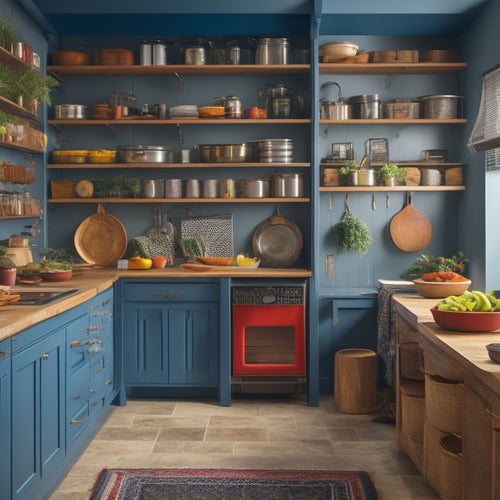
Unleash Creativity: Loose Parts Play at Home
Share
Loose parts play at home provides a powerful catalyst for igniting children's creativity, fostering imagination, and promoting cognitive, emotional, and social growth through unstructured, open-ended exploration and experimentation. By providing a well-curated space with vibrant colors, textures, and patterns, you can spark curiosity and inspire children to explore and express themselves. Open-ended materials like DIY materials, fabrics, and recycled objects encourage creative thinking, experimentation, and learning. By embracing loose parts play, you can set your child on a path of discovery and lifelong learning, revealing their full potential and building confidence. The possibilities are endless, and the journey is just beginning.
Key Takeaways
• Loose parts play at home fosters imagination, promotes collaboration, and develops problem-solving and critical thinking skills in children.
• Providing open-ended materials like cardboard boxes, fabric, and recycled items encourages creative thinking, experimentation, and learning.
• Creating a playful environment at home invites exploration, imagination, and self-expression, unlocking children's full potential and building confidence.
• A well-curated space with vibrant colors, textures, and patterns stimulates creativity, sparking curiosity and inspiring children to explore and express themselves.
• Engaging in loose parts play with children helps develop their cognitive, emotional, and social growth, setting them on a path of discovery and lifelong learning.
Unlocking the Power of Play
Five simple yet powerful words - 'play is a catalyst' - summarize the transformative potential of loose parts play. When harnessed correctly, it can open up a world of cognitive, emotional, and social growth for children.
Through playful experimentation, children are encouraged to explore and express their imagination, unhindered by predetermined outcomes. This freedom to create fosters a sense of agency and confidence as they navigate the world around them.
Creative exploration enhances problem-solving skills as children learn to think critically and adapt to new situations. By embracing loose parts play, parents can release their child's full potential, setting them on a path of discovery, creativity, and lifelong learning.
Creating a Playful Environment
As children embark on a journey of discovery and creativity, a thoughtfully designed playful environment can become a catalyst for their imagination, creativity, and learning. A well-curated space can spark curiosity and inspire children to explore, experiment, and express themselves.
Here are three essential elements to keep in mind when creating a playful environment:
-
Creative Decor: Incorporate vibrant colors, textures, and patterns to create an inviting atmosphere that stimulates creativity. Add imaginative corners with cozy nooks, pillows, and rugs to encourage relaxation and imagination.
-
Inspiring Corners: Designate areas for DIY inspiration, such as crafty corners with art supplies, building materials, and loose parts. This will encourage children to explore, experiment, and express themselves freely.
-
Adaptable Spaces: Guarantee that the environment is flexible and can be easily rearranged to accommodate different play styles and activities, promoting flexibility and creativity.
Nurturing Creativity at Home
In the comfort of their own homes, children can freely explore and express their creativity, unbridled by the constraints of traditional classroom settings. This is where loose parts play shines, fostering imagination and promoting collaboration.
By providing a variety of open-ended materials, children are encouraged to think creatively, experiment, and learn from their mistakes. As they engage in loose parts play, they develop essential skills such as problem-solving, critical thinking, and communication.
Parents can nurture creativity at home by creating a playful environment that invites exploration and imagination. By doing so, they can help their children unlock their full potential, build confidence, and develop a lifelong love for learning.
Frequently Asked Questions
How Do I Handle Mess and Chaos During Loose Parts Play?
'Embracing the chaotic storm of creativity, just like a painter's messy studio, requires intentional cleanup strategies and organization tips. Set boundaries, involve parents, and establish routines to maintain a safe and inspiring environment, allowing children to set free their imagination without overwhelming the space.'
What Is the Ideal Age Range for Introducing Loose Parts Play?
The ideal age range for introducing loose parts play is in early childhood, suitable for preschoolers (3-5 years), and continues to benefit school-age children (6-12 years) as they develop critical thinking and problem-solving skills.
Can Loose Parts Play Be Adapted for Children With Special Needs?
Like a master chef tailoring a recipe for a discerning palate, loose parts play can be adapted for children with special needs by incorporating individualized adaptations, sensory engagement, and therapeutic benefits, creating inclusive environments that nurture growth and exploration.
How Often Should I Rotate Loose Parts Materials to Maintain Interest?
To maintain interest, rotate loose parts materials every 4-6 weeks, ensuring a variety of materials and sustained engagement. This frequency promotes interest sustainability, stimulates creativity, and prevents boredom, while allowing children to explore and learn at their own pace.
Are There Any Safety Concerns I Should Be Aware of With Loose Parts Play?
When engaging in loose parts play, guarantee safety by providing active supervision, taking precautions against choking hazards, and being mindful of potential hazards to create a secure environment that fosters creativity and exploration.
Related Posts
-

Modern Countertop Spice Organizer Designs
Modern countertop spice organizer designs enhance your kitchen's aesthetics while maximizing functionality. These spa...
-

Roll-Out Trays for Modular Kitchen Cabinets
Roll-out trays are the perfect addition to your modular kitchen cabinets, enhancing both accessibility and organizati...
-

Over-The-Door Kitchen Storage for Large Families
Over-the-door kitchen storage is a transformative solution for large families. It maximizes vertical space, keeping y...


